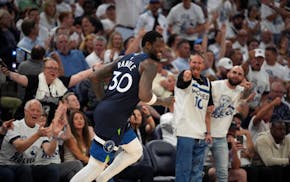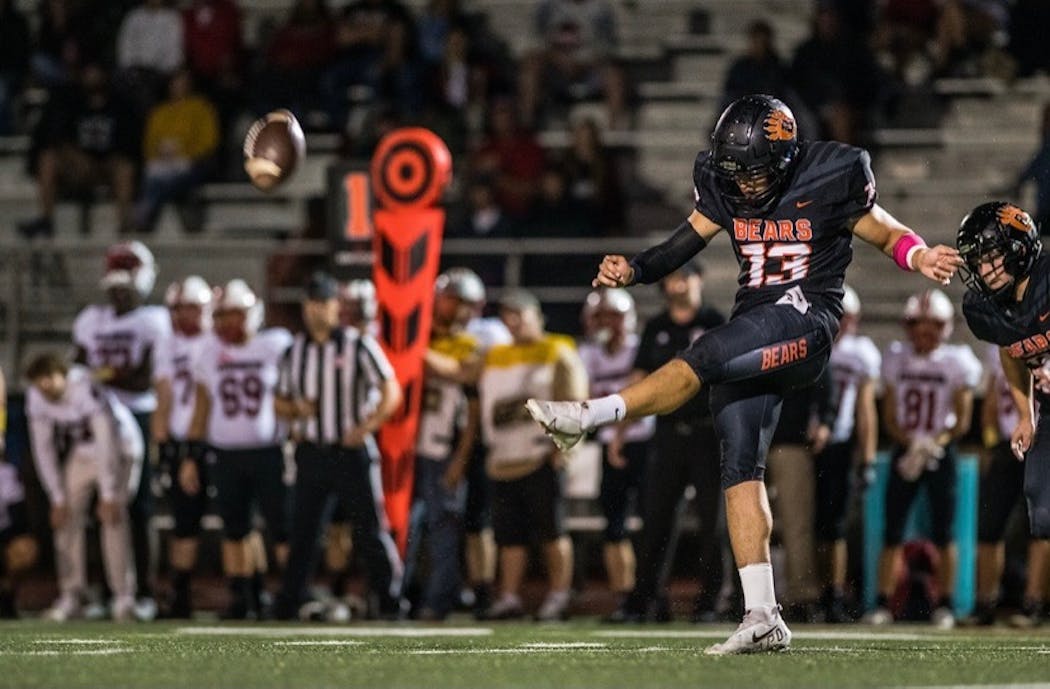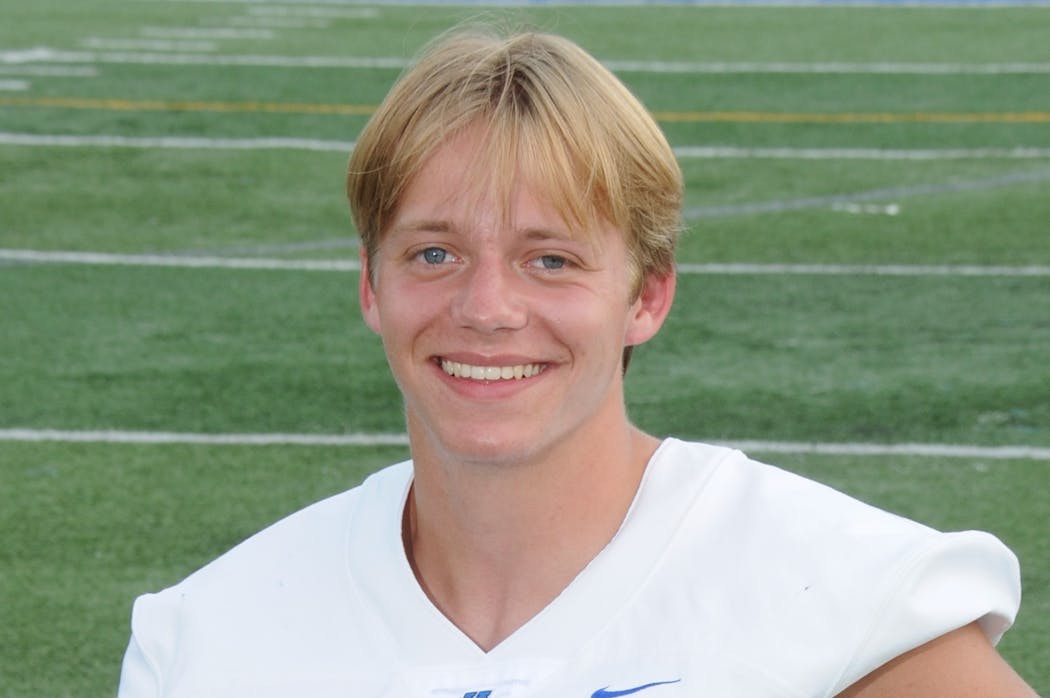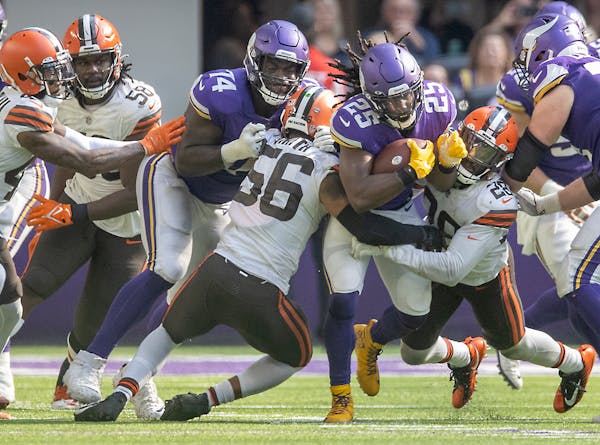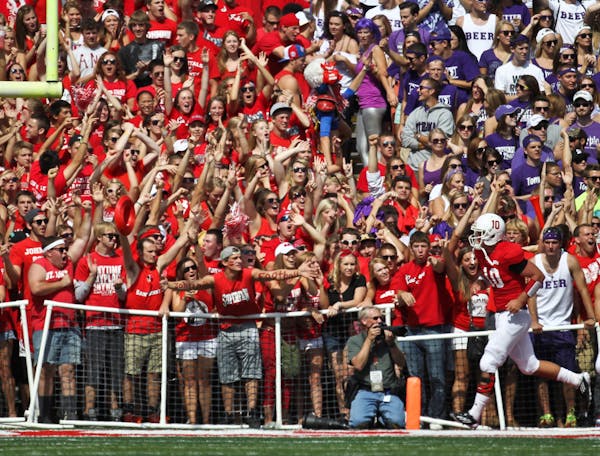This is the fourth edition of Football Across Minnesota (FAM), my weekly tour of football topics in our state from preps to pros. You can find all the previous FAM columns right here. Thank you very much for reading. — Chip
. . .
The meeting starts right at 5 p.m. It's Sunday evening, the second-most important day of the week for the Minnesota State football team, and there is a lot of ground to cover.
Players have grabbed a few pieces of pizza and found their seats in a large classroom inside the Taylor Center in Mankato.
Coach Todd Hoffner stands in front of the room, next to a large projection screen. He already has watched video of Saturday's 58-10 victory over Concordia (St. Paul) three times.
Now it's time to share his thoughts, and his critique, with his players. The Mavericks won big. Coaches loved the effort, but they are not content.
"Rome is not burning," Hoffner says. "But your coaches are going to give you some feedback. We've got to play better."
Football coaches across America — coast to coast, preps to pros — offer the same cursory answer when asked about specific plays or individual performances immediately after games.
"Gotta watch the film" has become a standard reply from the coaching lexicon.
But what does that look like? Hoffner provided me a peek behind the curtain.
“Keep chasing greatness. Strive for excellence but understand that you're not perfect.”
The full team gathers Sunday evening, but the work of evaluating Saturday's game begins almost immediately afterward. Offensive coordinator Collin Prosser and defensive coordinator Jim Glogowski dissect the video Saturday night at home.
"Wait until kids go to bed," Prosser said.
Coaches have access to three different angles — two tight shots and one wide — so nothing gets overlooked. They review each play in painstaking detail. They evaluate technique, hand placement, foot placement, hip placement, alignment and countless other details that only a trained eye can discern. That process takes them several hours to complete.
Every player on the field gets graded on every play. They are evaluated in two areas: Assignment and effort. Players receive either a plus or minus on each play. The scores are cataloged on a sheet of paper.
"It's black and white," Glogowski said. "Even if the kid makes the play but has wrong technique, that's a minus. There's no gray. It has to be black and white, or they won't know."
Strict grading prevents bad habits from forming. A successful outcome on a play — even a touchdown — doesn't mean that everything was properly executed.
Hoffner watches video the first time as soon as he wakes up Sunday morning. That was 5:30 a.m. this week.
He watches from a big-picture perspective that he shares weekly with his team. He has specific areas that he highlights — pillars of his program — that funnel into what he believes is one of football's most powerful elements: Momentum.
Hoffner watches the game again with his coordinators to critique the game plan and overall approach. He watches it a third time to evaluate individual personnel to determine any changes to the depth chart.
His program didn't become a Division II powerhouse by letting things slide. The Mavericks have posted a 76-10 record since 2014 with five NSIC championships. They advanced to the NCAA Championship game in 2014 and 2019.
Ranked 11th nationally, the Mavericks improved to 4-1 with Saturday's victory. They had a 36-game conference winning streak snapped in a 30-10 loss to Minnesota-Duluth in Week 2 this season.
"If people are fluffing your pillow and telling you that you're great," Hoffner said, "you have to keep it all in check."
He gathers his team every Sunday at 5 p.m. and begins with his presentation of "Championship stats." These are his program pillars, the areas that create momentum.
The graphic highlights specific stats, including turnovers, offensive efficiency, defensive efficiency, drive charts, big plays, three-and-outs, broken tackles, even one called "Disrespecting the football."
Stats are color-coded. Green is great, yellow is OK, red is below standard.
Hoffner refers to the chart as a Christmas tree.
"When we played Duluth, I said this is a Christmas tree that we don't want to see," he said. "There's too many red balls on it. We want green."
The tree was mostly green Sunday, which meant there was far more praise than criticism. But coaches emphasized the need to correct areas in red. Their goal is to be 90th percentile in all phases.
"Keep chasing greatness," Hoffner tells his players. "Strive for excellence but understand that you're not perfect."
The presentation concludes with coaches awarding bottles of Gatorade to someone deserving. Hoffner gives one to Glogowski, his defensive coordinator.
Assistant coaches take turns handing out Gatorade to players who excelled that week in practice or a game. The room erupts in cheers after each bottle is handed or tossed to a player.
“It's black and white. Even if the kid makes the play but has wrong technique, that's a minus. There's no gray. It has to be black and white, or they won't know.”
At 5:20 p.m., developmental players leave for a weightlifting session. Those who played in the game stay to review special teams video.
Coaches go through it frame by frame, sometimes in slow motion. They embed arrows and written comments in the video to emphasize corrections.
Hoffner stands in the back of the room, occasionally interjecting a coaching point.
Once special teams review is finished, the offense and defense split off into separate smaller meeting rooms. Coaches tell players that they have four minutes to get to their spot. Hoffner promises to have the night finished by 7:35 p.m. "on the dot."
In the offensive meeting room, Prosser begins by telling players that the offense generated 51 points despite 17 negative plays.
Prosser liked their effort, but "we've got to execute better."
The video rolls, play by play. Each snippet shows the play call and down and distance. They examine all three camera angles of every play, with Prosser rewinding occasionally to drive home a point.
Position groups sit together. Offensive linemen up front, wide receivers in the back, quarterbacks and running backs in the middle. Position coaches sit near their group, whispering corrections and reminders as Prosser goes through the video at the front of the room.
Occasionally, Prosser calls on a player to quiz him about his assignment or why he executed something a certain way.
They talk in football terminology, making it seem as though the room is speaking a different language. The corrections appear so minor — or specific — that a novice sometimes doesn't notice the difference. The players know.
Prosser highlights perfectly executed plays as well. He gets the room fired up on those plays.
He misses nothing. Twice, on touchdowns, he showed how the ball carrier allowed the football to get away from his body before he scored. The touchdown was great, but ball security is vital. Always coaching.
The offensive coordinator even critiqued himself. He apologized for getting one play call in too slow and later noted that the defense "got us on that one."
"I've got to make a better call," he said.
The mood is not entirely serious. The room cracks up over a clip of a lineman tripping as he runs to celebrate a touchdown with teammates.
The offense takes a five-minute break after an hour, then returns to discuss Saturday's opponent, Wayne State.
Hoffner is upstairs in his office alone, updating the depth chart. Another week of preparation is underway. Getting to watch, and rewatch, everything that happened in the game under microscopic critique is paramount for improvement.
"Imperfections of football," Hoffner said in a quiet moment. "They're everywhere."
. . .
LOVE OF THE GAME
Wally Venter moved from Cape Town, South Africa, to White Bear Lake last August when his dad got a new job.
Venter played rugby, water polo, field hockey and ran track growing up in South Africa. He knew "absolutely nothing about football."
"I talked to my dad and told him maybe I should try this football thing," Venter said.
White Bear Lake coach Ryan Bartlett welcomed him. Venter is 6-2, 185 pounds, so coaches envisioned him playing linebacker or tight end.
Venter wanted to be a kicker instead.
Coaches became intrigued when they saw Venter performing dropkicks in practice — dropping the ball and then kicking it after it touches the ground. It is a legal, but rare, kicking style.
"We didn't know the exact rules on it," Bartlett said. "We weren't totally sure how the dropkick works. We were just amazed."
Venter felt comfortable doing dropkicks since that style is common in rugby. Bartlett checked with the Minnesota State High School League's head of officials to confirm that it is legal and then allowed Venter to kick on the JV team last year.
"He just booms it," Bartlett said.
He said Venter's accuracy in placing the ball where he wants it on kickoffs is more impressive than the height or distance.
"The accuracy blows my mind," Bartlett said.
Venter has had to adjust to the difference between American footballs and rugby balls.
"It's much different with a football because the ball is smaller and the edge is sharper than a rugby ball," he said. "So the bounce from the ground is much more unpredictable than a rugby ball."
Bartlett decided to let Venter handle kickoffs in varsity games in Week 4 this season.
"I was kind of worried about it," he said. "Finally, I was like, 'All right, let's try it.'"
Venter has not attempted to dropkick a field goal or extra point in a varsity game yet — no holder is required — but Bartlett said he thinks that will happen at some point.
Bartlett watches him kick field goals in practice and estimates his range being around 40 yards.
The trick to a dropkick?
"It's all about timing," Venter said. "You really want to hit that ball where it would be if it was on the tee."
Stillwater coach Beau LaBore — a friend of Bartlett's — had heard about Venter, so he made a point to watch him during warmups this past Friday.
"Pretty much everyone who sees it — even the refs — are like, this is incredible," Bartlett said, noting that he talks to officials before games to inform them about the dropkick.
Venter even did a dropkick on an onside kick Friday.
The young man who knew nothing about football a year ago now loves being out on the field on Friday nights.
"I'm living a dream," he said. "I'm grateful every day for this opportunity. It's such a cool experience."
. . .
WEEKEND REWIND
Game balls
- Evan Swenson: Minnetonka senior intercepted two passes Friday in a 23-20 victory over St. Michael-Albertville, including a pick at his own 2-yard line that he returned all the way to the other 3-yard line. He also contributed nine tackles.
- Mark Crawford: Gophers punter was a difference-maker with a career game in a 20-13 victory over Purdue on Saturday. He averaged 51.3 yards on six punts, placing four of them inside the 20.
- Carter Birr: Albany running back carried the ball 23 times for 290 yards and five touchdowns in a 52-37 victory over Princeton on Friday. He also scored a pair of two-point conversions, caught a 20-yard pass and grabbed two interceptions on defense.
. . .
He said what?!
"Winning is fun. Football is fun, too. Football is not always just going to be the highs. You're going to have to go through the lows. You're going to have to respond." — Gophers quarterback Tanner Morgan after Saturday's win at Purdue a week after a career low point in a 14-10 loss to Bowling Green.
. . .
Numbers to know
- 12: Sacks by the Gophers defense in the past three games — four in each game. They registered only eight total sacks in seven games last season.
- 22: The number of times Kirk Cousins was pressured by the Browns on 41 dropbacks, according to ProFootballFocus — 53.7% was the highest rate in the league in Week 4.
- 135.5: Average rushing yards allowed by the Vikings through four games, which is slightly worse than last season's average — 134.4.
. . .
15-yard penalty
The Vikings basically handed the Browns three points — points that proved to be valuable — with an inexcusable lapse in the final minute of the first half. Cleveland faced a third-and-20 from its own 26 with 35 seconds left. The Browns were out of timeouts, and quarterback Baker Mayfield had been erratic throwing the ball. The Browns led 8-7 and were getting the ball to start the second half. There was zero chance they would throw a pass and risk an incompletion to stop the clock and force a punt.
Vikings defensive end Everson Griffen said afterward that they were expecting a pass. The Browns played it safe with a draw that the Vikings completely botched in defending. Kareem Hunt's run gained 33 yards, a gift that opened the door for a successful 48-yard field goal in the final seconds.
. . .
UP NEXT
Grab your popcorn
Shakopee at Eden Prairie. The visiting Sabers are undefeated and ranked No. 3 in the Metro. Eden Prairie is No. 4 and has lost only to top-ranked Lakeville South.
. . .
An important 48 hours for …
The Vikings secondary. The team announced Monday afternoon that cornerback Cameron Dantzler was placed on the reserve/COVID-19 list. Dantzler took over for starter Bashaud Breeland in the first quarter because of an illness. Cornerback Kris Boyd missed the game because of a hamstring injury.
. . .
A FAM FINAL WORD
"Spin"
Mike Zimmer tried to control the narrative surrounding his team's 1-3 start by telling reporters after Sunday's loss that "I've been doing this for 27 years. I know good teams and I know bad teams, and I know that this team has a chance to be pretty darn good."
Yes, the Vikings have lost three close games to teams that have a combined record of 10-2. But good teams find a way to win close games. The Vikings certainly haven't executed like a good team in critical situations. Until they do, in the famous words of Zimmer's mentor, Bill Parcells, they are what their record says they are.
. . .
Thank you for reading Football Across Minnesota. I'll publish this each Monday night on startribune.com, timed to kickoff of "Monday Night Football." And you can also join me on Twitter during the first quarter of MNF as I chat with readers about what I wrote each week.
Thanks, Chip (@chipscoggins on Twitter)
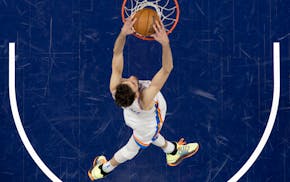
Scoggins: Chet Holmgren is in the right place at the right time
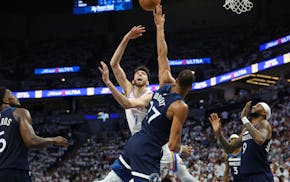
Chet Holmgren remains a basketball unicorn, a status forged in Minnesota and on display in the NBA
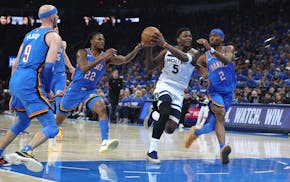
Scoggins: Three observations from the Timberwolves' Game 2 loss
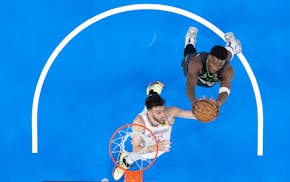
Scoggins: Three observations from the Timberwolves' Game 1 loss
